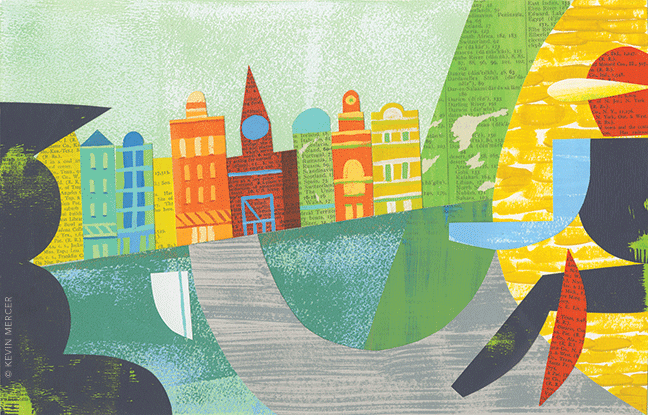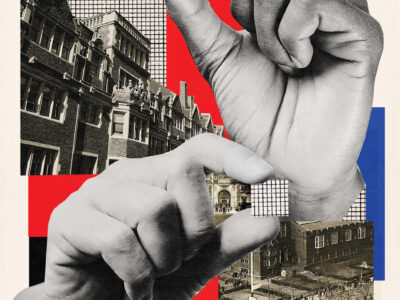
On my immoderate enthusiasm for moderation-loving Swedes.
By Rachel Buff | I first visited Stockholm as a wide-eyed 17-year-old on a bright June afternoon. At the airport I was retrieved by a Swedish family who would host me in their home for three days before dropping me off at a local school for a month-long summer camp. I held my camera out the window of their tiny van, snapping photos of street signs and bridges on our way to their house. Embarrassed by my eagerness, I would periodically hide my camera when Per and his teenaged daughter Elsa turned around to chat. But I couldn’t conceal my giddiness as we cruised over water and in between castles, under a low-hanging sun that draped the entire city in gold.
The Land of the Midnight Sun, as Sweden is so often called, could not be a more perfect description of the country’s capital in summer. Because of its location close to the Arctic Circle, Stockholm sees nearly 20 hours of daylight at the solstice, the sun rising around 3:30 a.m. and setting after 10 p.m. Residents make full use of the extra daytime hours. People host ten o’clock barbecues, or stay out at clubs all night, barely acknowledging that one day has ended and another has begun.
I spent my first few days that summer diving headfirst into Swedish life: sipping elderberry lemonade from an IKEA glass on a porch in a wooded hillside suburb; eating wild strawberries on a trampoline in the late-fading sun; and wobbling on a bike up and down hills for hours, until at last arriving at a bridge where the entire city lay before me.
Stockholm is a mosaic of multi-colored buildings and high-steepled churches rising above vast, glistening waterways. The city is spread over 14 islands situated in an archipelago made up of nearly 25,000 more, with every bridge leading to its own little world. On an island just across from the city’s striking silhouette sits an amusement park called Gröna Lund, so that in one gaze you can see the centuries-old Tyska kyrkan (German Church) shooting into the sky; a harbor bordered by green, brick, gold, and peach-colored buildings; a few dozen stark-white fishing boats, yachts, and ferries; and three bright roller coasters that twist above the trees or nearly skim the water. Every whimsical European fantasy is realized.
Straddling my bike at the edge of the harbor, with a vibrant city and a thousand years of history spread out before me, I knew with my entire being that Sweden was my place.
But the truth is that I fell in love with Stockholm long before I could place it on a map.
At 15, I attended a summer camp in Germany where my American delegation—drawn from a group called CISV International, the successor to Children’s International Summer Villages, which I joined as a Florida middle-schooler—was put together with delegations from nine other countries. Over the course of the four-week camp, we Americans grew quite fond of the affable Swedes. They embodied everything I wanted in myself: cleverness, spontaneity, openness. I admired them intensely, and they seemed to enjoy having me around. Everything about them and their country was overwhelmingly positive in my mind.
When I went back home, I read and watched everything I could find about the country, adding to the stories and descriptions with which my camp friends had fascinated me. While other teenagers were building identities around soccer or lifeguarding or getting drunk every weekend, I was building mine around Sweden. So when the opportunity to be a counselor at another CISV camp in Stockholm came my way two years later, my obsession could finally be realized.
Swedes swear by lagom, just the right amount . Lagom är bäst, sometimes translated as “Enough is as good as a feast,” is an oft-quoted phrase utilized by homemakers and politicians alike to describe the ills of excess.
That first summer in the Stockholm suburb of Nacka, I experienced lagom every day. Lagom in a solid night of five hours of sleep. Lagom in a glass of cold water after a game of tag. And most importantly, lagom in the dining hall, where there were no trash cans. I had always known that my eyes were bigger than my stomach, but had never realized just how much food I actually threw away each day. In the first few days of adjustment, I forced myself full of the extra bread or salad I had grabbed, eating nearly to sickness to avoid the shame of pawning off my food on someone else. I eventually got the hang of it, learning to take only half of what I thought I could eat. Our camp produced nearly zero food waste that summer, a common occurrence in Sweden.
I still think of lagom every time I eat.
On my day off from camp that first summer in Stockholm, some other counselors and I decided to take the bus into Gamla Stan, Old Town, thinking maybe we’d tour the Royal Palace or do some shopping. But as we wandered the cobblestone streets, we stumbled upon an enormous green park. We immediately made our way to a playground, where we settled into a large basket swing that comfortably fit us all. We told jokes and shared stories and gossiped about the camp, rising only to seek lunch and run around a bit with some Swedish toddlers before returning to the swing.
Suddenly the entire day was gone, and we had to run to the Slussen bus stop to make it back to camp by dinner. We had managed to spend almost nine hours of our only day off on a swing. But to us, the day had not been a waste at all. We were in the fresh air of a beautiful city on a warm summer day, and no amount of monuments or churches could have been more enjoyable.
I’ve visited Sweden three more times, and each visit has enraptured me more. When I think of Sweden, I think of singing the frog song and dancing around a maypole during the Midsommar celebration, with a flower wreath perched atop my head. I think of sipping warm milk and sugar on a dark, rainy day. I think of a picnic on the way to Marstrand that turned a black lake’s cold rocky shore into a hidden paradise. I think of Eurovision song contests and three-story dance clubs and pear cider and vanilla cigarettes. I think of the Swedish government turning trash into energy. I think of livet på en pinne—“life on a stick”—the good life. I think of my fondest friends and my feeling of belonging despite my name, my language, and my appearance. I fell for Sweden by accident and I’ve been embracing it ever since. My obsession is anything but lagom—it’s over-the-top and borderline fanatical. But somehow I think the Swedes don’t mind.





PS
You got everything right except the SMOKING. Lay off while you can !
Smoking Kills. More and More WOMEN, poorly educated, low income are victims of the smoking industry.
Nice article Rachel ! My 92 year old Wharton `49 Dad emailed it to me.
I´m a college of arts and sciences `79 Penn grad living in Stockholm since 88. There are a few of us from Penn here. I´m a public health nurse. My friend a lawyer. Ride my BIKE to CLIENTS. How great is that?! With my swedish nursing degree (and my husband and kid) went back to Brookyln for 4 years and worked there too. Lots of fun to work in the States when you know you can get back to Sweden.The greatest welfare state. I´m kidnapped and loving it.. Totally!